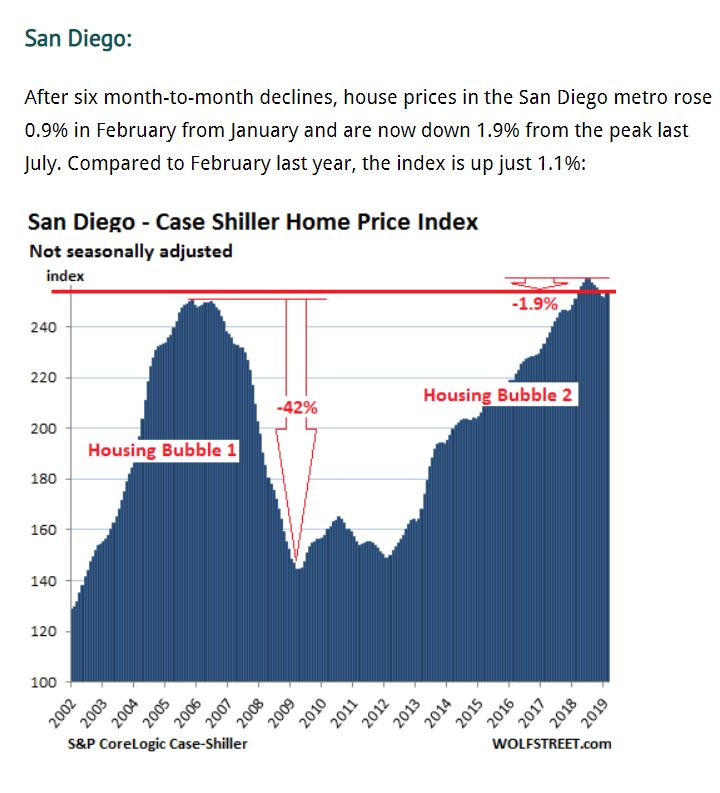An excerpt from this article: https://www.usatoday.com/in-depth/money/2021/02/04/homes-sale-we-housing-bubble-prices-outstrip-wages/6671282002/ For Mark Stapp, a real estate professor at Arizona State University, what's going on in the real estate market right now is...
Bubble Talk
2019 Wrap-Up & 2020 Forecast
Last December, I had guessed NSDCC sales would drop by 20% this year, but that was back when mortgage rates were touching 5%. With rates back in the 3s for most of 2019, our sales exceeded my expectations - here are the NSDCC detached-home listings and sales for the...
Who Will Give Them Away?
Hat tip to PC for sending in this doomy article about the future of real estate - an excerpt: At some point, housing prices become so expensive that no matter how low interest rates go, the average household simply can’t afford to buy. We may very well be at that...
Recession Bubble Talk
Our blog friend Ryan touched on the thought on everyone's mind today - will the impending recession have an effect on real estate? There were 23 comments - see his blog post plus lively discussion here:...
San Diego Bubble vs. Other Cities
Our Case-Shiller Index did set a new record yesterday, but our Housing Bubble 2 is relatively tame - just 4% above the previous peak of 250.34 in November, 2005. Compare to others like Seattle (+33% over last peak), San Francisco (+41%), and Denver (+59%) here:...
Navigating the SD Bubble
Rich has done a fantastic summary on the San Diego real estate bubble - read more here: https://www.piggington.com/shambling_tiny_halting_step_towards_affordability
2019 Bubble Report
Doesn't it feel like we're in another bubble? Home prices have been on a tear for ten years straight, and are at their highest levels ever. Is this bubble going to pop too? Let's look at the statistics first. I took the most recent 45 days to get the latest scoop,...

Double Bubble?
More doomer talk at Wolfie's, though he doesn't say much other than some slight skittishness in the Case-Shiller Index equates to home prices going down - click here for 131 comments:...
Housing Bubble 2.0
This guy is killing me. I've spent the last thirteen years trying to build an audience here by presenting as much evidence as I can find to interest home buyers and sellers, and I am very appreciative of you joining me! My videos get 100-200 views, and I have 1,065...
Ten Years After The Bubble
For those who study our housing bubble history, here's a report by Dean Baker, a senior economist at the Center for Economic and Policy Research: Link to...



